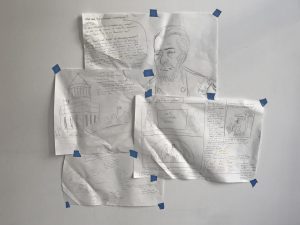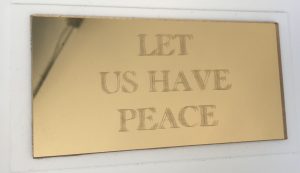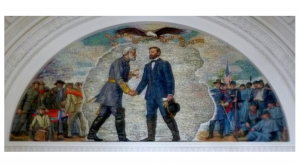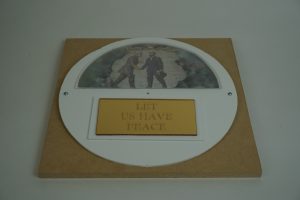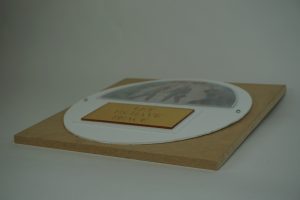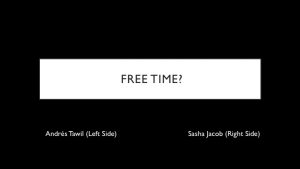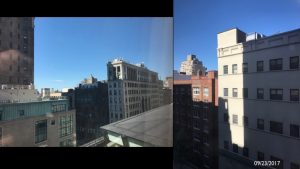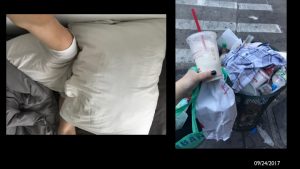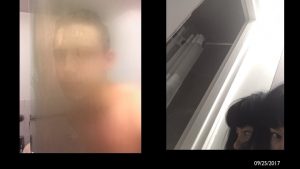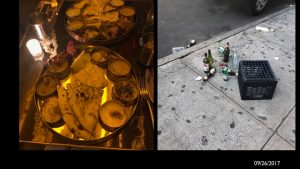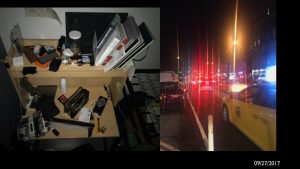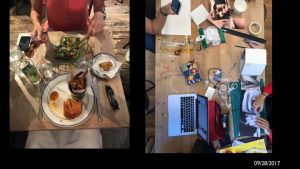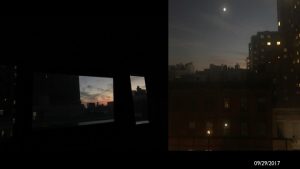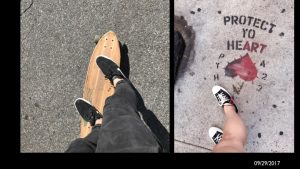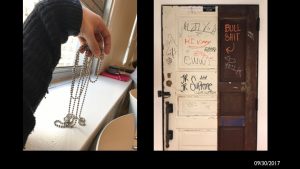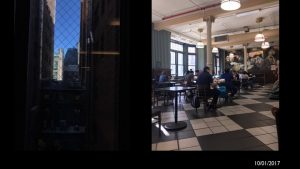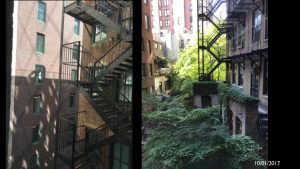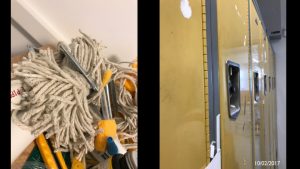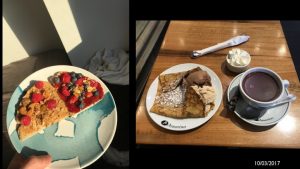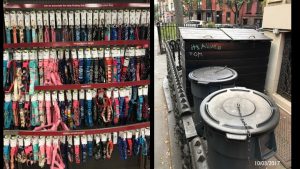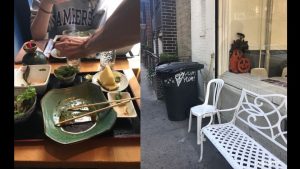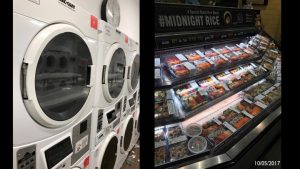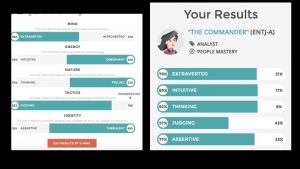Tag: studio/seminar: shift
Bridge 4: Intervention with a Monument
The monument I chose to “intervene” with is the General Grant National Memorial/Grant’s Tomb, located in Riverside Park in New York City. My aim was to create a commentary piece separate from the mausoleum itself out of respect and an educational context.
Planning/design process:
Materials used:
- white, gold reflective, and white plexiglass
- Olfra knife (for letter engraving)
- MDF board
- bristol paper
- Photoshop + Illustrator (collage)
- nut-backed screws
Finished result:
The placard, taken as inspiration from the very same quote etched on the outside of Grant’s Tomb.
The original painting inside Grant’s Tomb.
The interactive spinnable collage inside of the wheel. Pictured are roughly 150+ years of protest history in the United states, including the Women’s Suffrage Movement in the mid 1800s into the 1920s, the Civil Rights Movement of the 1960s, the Black Lives Matter and student protests in 2014, and the Alt-Right rally and Antifa protests in August of 2017. Using both historical and contemporary examples of rally and protest illustrates that this power dynamic between minorities and their oppressors is not a new phenomena to the US, nor is it showing any signs of ever going away or dying down.
Bridge 2 – Preparatory Work
Is there a guiding theme/topic?
As of right now, most of our pictures fit within the theme of how we spend our leisure/free time. Many of the photos are random snapshots taken throughout the day.
How do materials function within the “conversation?”
In most of my and Andy’s pictures, lighting, colour, and form are either harmonious or provide a sense of bold contrast. The composition of the photo also feeds into the attitude of the image, which determines the overall feel to the pictures as a duo.
What role does coincidence play?
Coincidence is interesting as it may highlight similarities in our daily routines, or whatever it is that we might be doing at the moment of interaction.
How does working as a collaborative pair influence your work and thinking?
Working as a pair has made me more conscious of my surroundings and what I am doing, and whether or not I can take an interesting photo considering these two factors. Additionally, depending on who sends the first picture, I also take into account how it might match or clash with the accompanying response.
